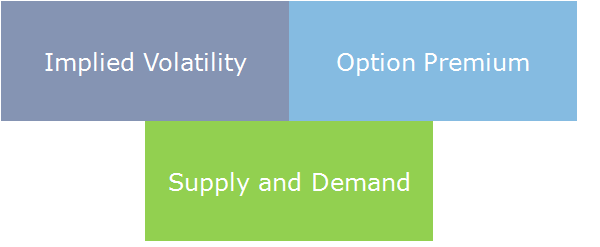Implied volatility of options on a stock
When there is an event that is likely to impact the price of an equity e.
This rise pricing is attributed to an increase in the option's implied volatility. When the implied volatility is high, that means that the market anticipates a greater movement in the stock price. I am often asked "How can I determine how far a stock is likely to move? I teach an entire class on this subject in the OptionsANIMAL curriculum in level 2. Want to learn more about Implied Volatility?

Watch my video class on Implied Volatility down below. When we talk about historical volatility, we are measuring the zigzaggedness of a stock. How much did it zig and how much did it zag?
If it zigged and zagged a lot, the historic volatility is high. In mathematical terms we determine the zigzaggedness by measuring the "standard deviation. For the most part, stock exhibit a normal distribution. Actually, it's a log normal distribution, but let's keep this simple. The historic volatility is the movement that did occur.
The implied volatility is the movement that is expected to occur in the future. When we are estimating future prices, we use the implied volatility.
Implied volatility - Wikipedia
It has earnings next month. The current Implied Volatility is JAN options expire in 22 days, that would indicate that standard deviation is:. Now, for those of you that have not touched the square-root key since you took algebra back in high school, you can just use an options chain to get an estimate of where the stock could move.
Implied Volatility Surging for Ford (F) Stock Options - January 19, - bozunoteyuta.web.fc2.com
Find the price of the at-the-money straddle and the out-of-the-money strangle and add them together and divide by two. This method is a enough to make a mathematician cringe.
However, it works out to be a pretty good "SWAG," as they say. I don't use these calculations as a price target to build a strategy. I use them more as a warning sign. Considering the potential movement, you may want to reconsider your delta neutral strategy e.
While the premiums look good now, you might want to wait until after the event for that stagnant strategy. Or, you may be looking at a straddle or strangle knowing that there is going to be a big movement. If you look at those estimated moves, you'll see that a straddle or strangle is probably not that attractive - especially when you consider the volatility crush that is likely to occur after the event. For example the current JAN straddle on AAPL. Now, consider the estimates made above.
Does this look like a trade that you'd want to be in? Unless you know something that the market doesn't know - like the iPhone cures the common cold - you probably are best advised to avoid this sort of trade. Another factor that must be considered is the dramatic changes in implied volatility. But, I will leave that for another post. Unless you have a strong sentiment, I believe the most prudent approach is to consider a protective strategy.
For stock ownership, I believe that a collar trade is typically best strategy around earnings. It protects you from downward movement in the stock.
Highest Implied Volatility Equity Options
Also, because there is a long and a short option, the impacts of volatility crush is mitigated. The art is picking the right options and that is what we teach you at OptionsAnimal. Home About Did You Know? Home Contact Us Join Now Member Login. Using Implied Volatility to Determine the Expected Range of a Stock By Eric Hale December 30, First a little theory: The following calculation can be done to estimate a stocks potential movement: JAN options expire in 22 days, that would indicate that standard deviation is: Watch My Class on Implied Volatility.
Thoughts on what these numbers mean: Eric Hale OptionsANIMAL Instructor. A New Year Allows You to Invest S.